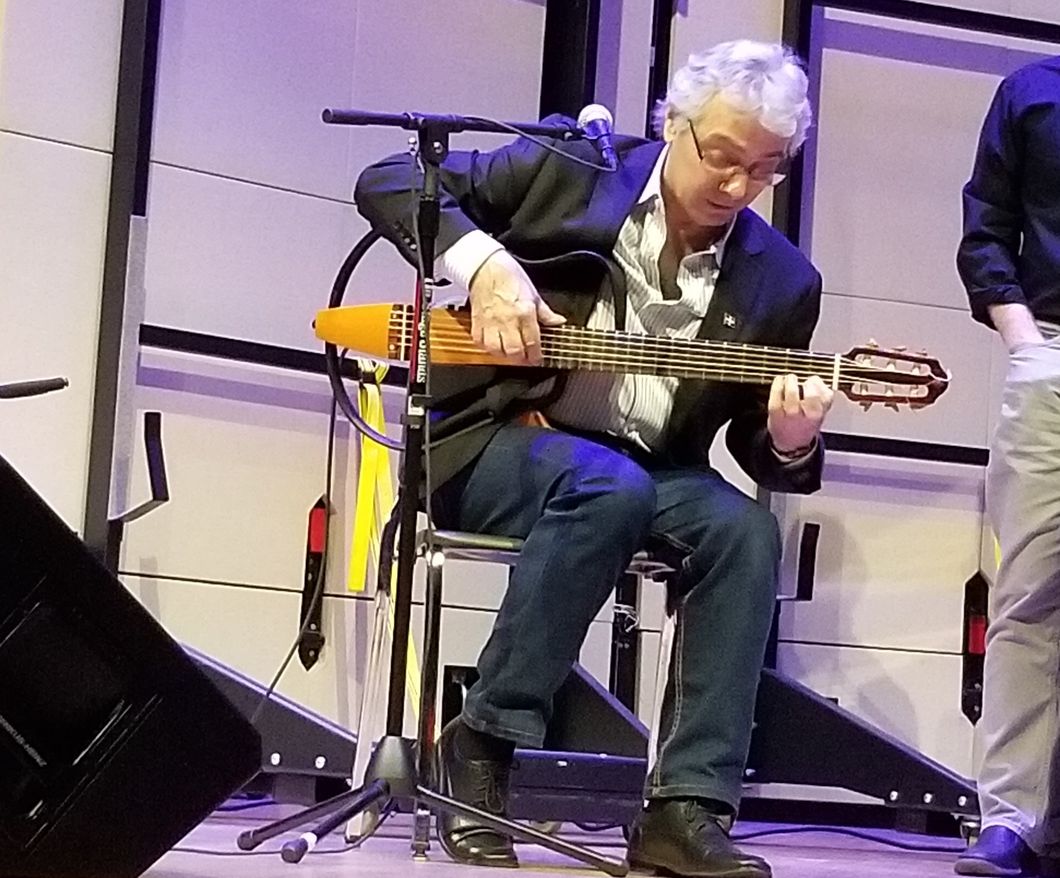When most people hear the word jazz they either think about snoozing to boring elevator music or listening in confusion to a jumble of random notes.
However, jazz, like any other music, can be unraveled and understood quite easily by anyone. Jazz usually swings and can be fast and chaotic, but because it is so much more intense than other genres of music emotions are evoked more strongly. Part of that intense emotion comes from the fierce camaraderie and communication essential to jazz.
Such fierce camaraderie was demonstrated to me this Monday when I attended the last stop on the tour for The Dominican Jazz Project, featuring my talented professor Stephen Anderson and his numerous bandmates, at Moeser Auditorium on the UNC-Chapel Hill campus. The concert was especially interesting because of their style of music.
Jazz was born out of a fusion of African rhythms and European harmonies and has always been a genre of music that melds different cultures together.
However, The Dominican Jazz Project guys did not play in the typical style of jazz of today. With a marriage of Latin rhythms and grooves typical of Dominican music with the harmonies of the more classic American jazz came the birth of a sound unlike any I have ever heard. Not only was there a marriage of culture in terms of the music, but also in terms all of the members of the band. The American musicians were excited to learn from the Dominican musicians and vice versa.
The whole concert was punctuated by the numerous Dominican percussion instruments, including a metal scraper instrument along with drums like congas and bongos, and the enthusiastic shouts of the Dominican percussion player. Other Dominican instruments featured adding to the overall flavor of the sound were a guitar with no body and a melodica. A melodica looks like a tiny keyboard and is played by one blowing into it.
The music was amazing. The band would unravel themes and make them increasingly more chaotic all while getting louder, and then right at the highest point of tension they would all drop down and return to the more controlled main melodic theme. This sort of unraveling of music, as well as the camaraderie and culture fusion found in jazz, is what makes jazz still relevant as an art form today.
Everyone could do with a little bit of what jazz represents, especially in an era such as this one.
With the fusion and appreciation of cultures that jazz offers perhaps people could learn to be more considerate of the conflicting cultures and beliefs of others. This newfound perspective offered by jazz could perhaps help people reunite and fuse together in terms of politics and beliefs. The United States has always been a country defined by the many different beliefs and cultures maintained in it, so if people could learn to appreciate those differences once again perhaps what is wrong with our country could begin to improve.
The members of The Dominican Jazz Project learned from each other and were changed for the better. Not writing off other cultures and opinions just because they are different and actually learning from those differences would improve the world as a whole.
The chaotic unraveling of the main themes of jazz represents the tension of our nation as of now, but with a change in perspective perhaps we can reach a point where we will return to a controlled peace, just as jazz does.
Listen to the colorful tunes of the incredibly skilled players of The Dominican Jazz Project!

















